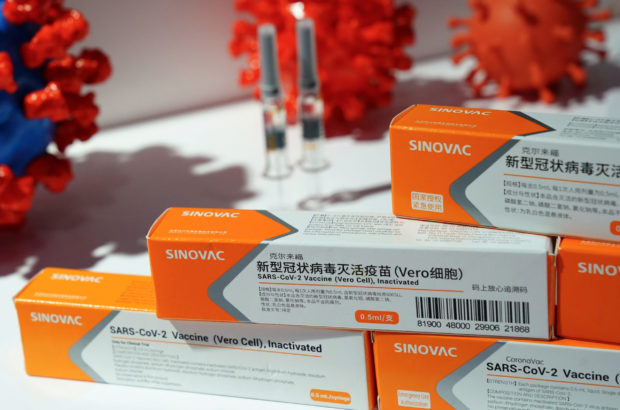China-made vax administered on PH guards vs China vessels

REUTERS FILE PHOTO
PUERTO PRINCESA CITY, Palawan, Philippines — Soldiers on the lookout for Chinese vessels intruding into the West Philippine Sea had to welcome the enemy—so to speak—when they received their first jab of Sinovac, the COVID-19 vaccine developed by China.
“We didn’t have the chance to choose the brand we wanted,” nurse Dennis Abacial, acting municipal health officer of Kalayaan town in Palawan province, said of the 100 residents, including uniformed personnel, of Pag-asa Island who were vaccinated on Wednesday.
“[The government] just forwarded the Sinovac allocation to Kalayaan [so] we didn’t request for AstraZeneca anymore. So far, none of the residents has requested a different brand,” Abacial added.
The Philippines and China have competing claims over parts of the South China Sea. A 2016 arbitral ruling invalidated China’s expansive claims. Despite that, the intrusion of Chinese vessels has continued in the disputed waters where Pag-asa Island is located.
Not brand conscious
Abacial said “[the residents] were informed that the vaccine was Sinovac, but they weren’t brand conscious. It was a normal reaction to have fear, [which was] addressed during the counseling.”
Article continues after this advertisementCertain “at risk” individuals, however, were bumped off and scheduled for vaccination in Puerto Princesa “where hospitals and other facilities are available in case [of] adverse effects.”
Article continues after this advertisementBecause of inclement weather and rough seas, the vaccination team of 10 medical and administrative front-liners departed the capital on June 5 and arrived at the island on June 7 aboard the ML Queen Seagull.
The vessel had a generator to make sure that the vaccines are maintained in cold chain storage between 2ºC and 6º C during the transport, Abacial said, adding that the vaccine’s second dose, expected to be administered on July 6, have already been secured at the cold chain storage in Bancao-bancao village in Puerto Princesa City.
Abacial said prioritizing Pag-asa’s residents was important to protect them in anticipation of upcoming programs expected to bring in outsiders to the island.
According to the province’s disaster risk reduction office, Kalayaan remains the only Palawan town free from the virus out of the province’s 23 municipalities.